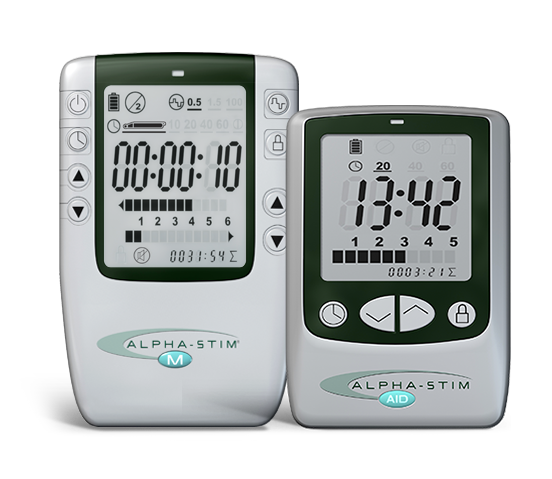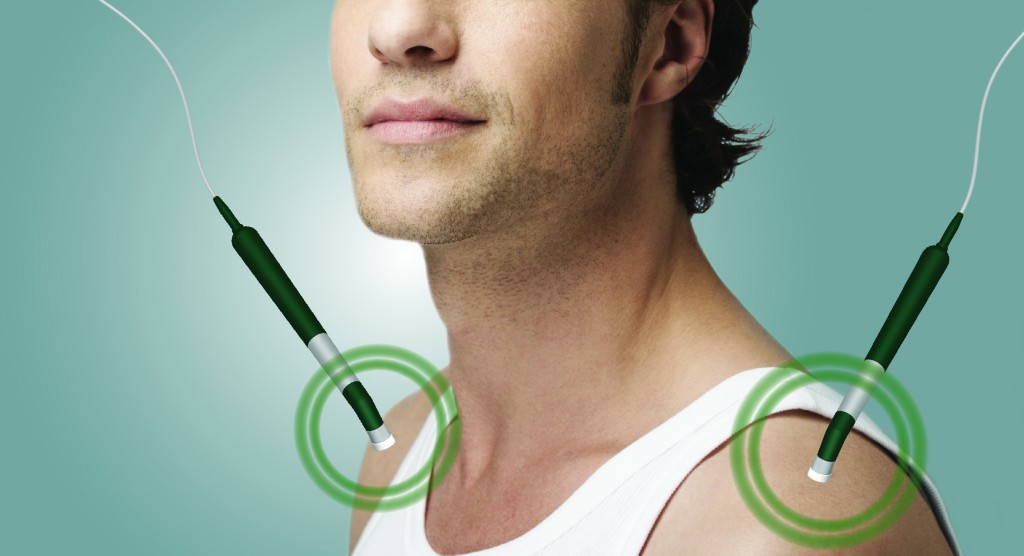
Microcurrent Electrical Therapy
- Any nerve, muscle or articular pain
- Cancer pain
- Decubital ulcers and fractures
- Periodontal, orthodontic and post surgical pain
- Sprains, strains, and spasms
- Paresis
- Post-operative pain and scars

Postulated Mechanisms of MET
Microcurrent stimulation appears to affect cellular physiology and produce its effects by reducing the electrical resistance of the injured tissue and restoring its cellular capacitance. A study by Cheng et al. (1982) further indicates that applications of microcurrent stimulation (< 500mA) can dramatically increase the production of ATP in the tissue by as much as 500% and increase amino acid transport and protein synthesis in the treated area by 30-40%.
The classic works by Björn E. W. Nordenström and Robert Becker have shown that endogenous bioelectricity, and changes in the polarity of the tissue triggered by illness or injury, may represent the primary catalyst of the healing process. Zhao et al. (2006) have shown that minute electrical fields, similar to those detected endogenously, serve as a prime directional cue to direct cell migration during wound healing and manipulation of these endogenous currents may affect wound healing in vivo. It is then plausible to speculate that stimulation with mild electrical currents may not be limited to analgesis effects but may also help restore or enhance the endogenous current flow and consequently facilitate the healing process.
MET, especially at low-frequencies, may also produce some analgesic effects via release of endogenous opioid peptides.
MET vs. Transcutaneous Electrical Nerve Stimulation (TENS)
In comparison with TENS therapy, MET uses 1,000 times less current (10-600µA), delivered at an extremely low frequency of 0.5Hz and a 2,500 times longer pulse width (<2s). MET can produce rapid and significant treatment effects, often within 2-5 minutes of stimulation and can treat even intense pain problems.
Furthermore, MET can produce a relatively long-lasting reduction or elimination of pain lasting several hours or days, often after a single or several treatments. Repeated stimulation with MET can produce greater benefits over time (5-7 applications) as the effects of this modality are residual and cumulative in many patients. Residual effects of TENS therapy are minimal in most patients.
Read More
European Perspective: A comparison between TENS and MET
MET has a different mechanism than TENS. It works on a cellular level and has its effects much closer to the cause of the injury.
...psysiotherapists already have a better solution -- one that is pleasant and may competently control the pain...
If pain decrease is to be achieved on a gate-control basis, a one-inch mistake can cause the treatment to have no effects at all.
MET might be in a better position to treat trigger points.
Minor problems or almost cured injuries may need no more than 20 or 30 minutes of treatment.
Most authors describe the endorphin release as a powerful tool to reduce pain, more powerful than the gate-control.
MET responds well to almost every kind of back pain: facet joint, disc, degenerative joint disease, sacroiliacal joint, subclinical involvement of an organ, no matter what the cause.
Mercola, J. M. and D. L. Kirsch (1995). The basis for microcurrent electrical therapy in conventional medical practice. Journal of Advancement in Medicine, 8(2):107-120.
Kirsch, D. L. (2002b). A practical protocol for electromedical treatment of pain. Chapter 61 in Pain Management: A Practical Guide for Clinicians (the textbook of the American Academy of Pain Management) edited by Richard S. Weiner, CRC Press, Boca Raton, Florida, 2002.
De Bock, P. (2000). European perspective: a comparison between TENS and MET. Physical Therapy Products. September 2000.
Boswell, Nathalie S. (1989). Neuroelectric therapy eliminates xerostomia during radiotherapy – a case history. American Journal of Electromedicine 115:105-107.
Bauer, W. (1983b). Electrical treatment of severe head and neck cancer pain. Archives of Otolaryngology, 109(6):382-383.
Kirsch, D. L. (2002a). Electromedicine: the other side of physiology. Chapter 60 in Pain Management: A Practical Guide for Clinicians (the textbook of the American Acadamy of Pain Management) edited by Richard S. Weiner, CRC Press, Boca Raton, Florida, Pp 749-758, 2002.
Zimmerman, S. I., and F. N. Lerner (1989). Biofeedback and electromedicine reduce the cycle of pain spasm pain in low back patients. Medical Electronics, 117:108-120.
Lerner, F. N., and D. L. Kirsch (1981). A double-blind comparative study of microstimulation and placebo effect in short term treatment of the chronic back pain patient. Journal of the American Chiropractic Association, 15(11):101-106.
Cheng et al. (1982). The effects of electric currents on ATP generation, protein synthesis, and membrane transport of rat skin. Clin. Orthop. Relat. Res. 171:264-272.
Nordenström, B. E. (1983). Biologically Closed Electric Circuits. Clinical, experimental and theoretical evidence for an additional circulatory system. Nordic Medical Publications, Stockholm. 385 pp.
Becker, R. O., and G. Selden (1985). The Body Electric: electromagnetism and the foundation of life. William Morrow, New York. 364 pp.
Zhao et al. (2006). Electrical signals control wound healing through phosphatidylinositol-3-OH kinase- and PTEN. Nature 442:457-460.
Ulett, G. A., and S. Han (2002). The biology of acupuncture. Warren H. Green, Inc. St. Louis, Missouri. 160 pp.